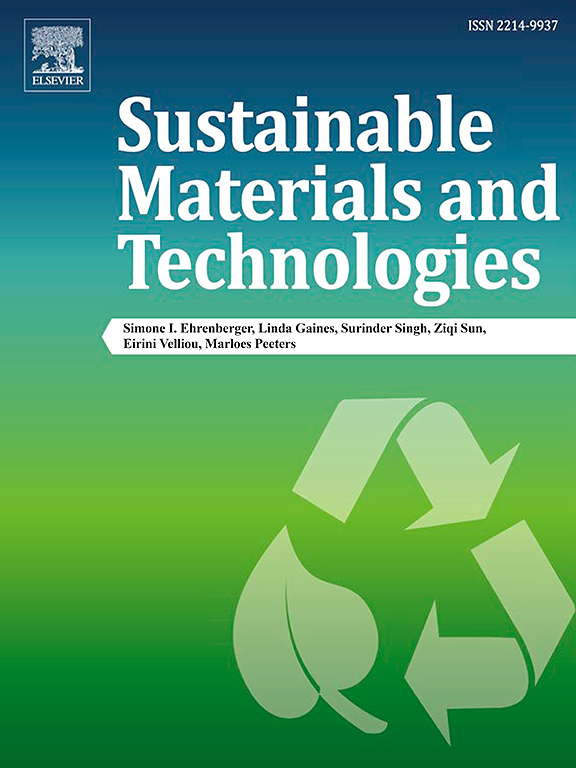用于预测再生混凝土抗弯和抗拉强度的实验研究和机器学习模型:弥合可持续材料与结构设计之间的差距
IF 8.6
2区 工程技术
Q1 ENERGY & FUELS
引用次数: 0
摘要
结构部件的可持续性要求再生骨料混凝土(RC)达到足够的抗折和劈裂拉伸强度,以满足实际使用的需要。这些强度取决于混合设计和再生粗骨料(R-CA)的特性。R-CA 来源的可变性和 RC 固有的异质性使强度预测变得复杂。现有的模型都没有考虑到这种变异性,从而在可持续材料和结构设计之间留下了空白。本研究开发了基于机器学习的模型,用于预测 RC 的抗弯强度和劈裂拉伸强度,而不受 R-CA 来源和属性的影响。吸水率、有效水灰比、粗骨料水泥比和 R-CA 替代率等关键因素都可用于预测。实验还分析了不同 R-CA 类型对 RC 和天然骨料混凝土(NC)的影响。本研究使用了来自本研究和 33 项先前研究的 353 个测试结果数据集,并对各种机器学习算法 (MLA) 进行了评估。结果显示,与 NC 相比,RC 的抗弯强度和劈裂拉伸强度分别降低了 41% 和 23%,但经酸处理和机械处理的 R-CA 可分别恢复 NC 强度的 94% 和 93%。在所有 MLA 模型中,梯度提升模型对 RC 和 NC 抗折和抗拉强度的预测精度最高。这项研究引入了预测 RC 和 NC 强度的新方程和 C/C++ 工具,有助于可持续混凝土设计,并缩小了研究与实际应用之间的差距。本文章由计算机程序翻译,如有差异,请以英文原文为准。
Experimental investigation and machine learning models for predicting flexural and tensile strengths of recycled concrete: Bridging the gap between sustainable materials and structural design
The sustainability of structural components requires recycled aggregate concrete (RC) to achieve adequate flexural and split tensile strengths for practical use. These strengths depend on mix design and the properties of recycled coarse aggregates (R-CA). The variability in R-CA sources and the inherent heterogeneity of RC complicate strength predictions. No existing model accounts for this variability, leaving a gap between sustainable materials and structural design. This study develops machine learning-based models to predict the flexural and split tensile strengths of RC, regardless of R-CA source and properties. Key factors such as water absorption, effective water-to-cement ratio, coarse aggregate-to-cement ratio, and R-CA replacement ratio are used for predictions. The impact of different R-CA types on RC and natural aggregate concrete (NC) is also experimentally analyzed. A dataset of 353 test results from this study and 33 prior studies is used, and various machine learning algorithms (MLA) are evaluated. Results show a 41 % and 23 % reduction in flexural and split tensile strengths of RC compared to NC, but acid and mechanically treated R-CA can recover up to 94 % and 93 % of NC's strengths, respectively. Among all MLA models, the gradient boost model depicted the highest accuracy in predictions for the flexural and tensile strengths of both RC and NC. This research introduces new equations and a C/C++ tool for predicting RC and NC strengths, contributing to sustainable concrete design and bridging the gap between research and practical application.
求助全文
通过发布文献求助,成功后即可免费获取论文全文。
去求助
来源期刊

Sustainable Materials and Technologies
Energy-Renewable Energy, Sustainability and the Environment
CiteScore
13.40
自引率
4.20%
发文量
158
审稿时长
45 days
期刊介绍:
Sustainable Materials and Technologies (SM&T), an international, cross-disciplinary, fully open access journal published by Elsevier, focuses on original full-length research articles and reviews. It covers applied or fundamental science of nano-, micro-, meso-, and macro-scale aspects of materials and technologies for sustainable development. SM&T gives special attention to contributions that bridge the knowledge gap between materials and system designs.
 求助内容:
求助内容: 应助结果提醒方式:
应助结果提醒方式:


